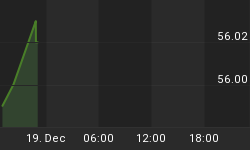The U.S. dollar index is oversold and could rebound to 81.00/82.00.
QE3: What is next?
The bearish economic cycle that started in 2000 is still unfolding, and if history repeats itself, this cycle is expected to continue for 13-17 years. The Fed has said it many times: The U.S. economy is still under performing, and employment cannot increase when economic growth is so low as a result, a third round of quantitative easing (QE3) has been launched, while rates should remain low until 2015. Now, the Federal Government should stop the spending cuts and tax increases (the fiscal cliff) planned for January 1, 2013. Corporate tax reforms will instead help companies use fresh liquidity to growth and expand. Thanks to the Fed's policy, over the years, companies have created a surplus of financing that is waiting to be used.
Also, household deleveraging has declined for the last6 quarters. QE3 is expected to help more people moving into the housing market again. However, inflation will be the result. The U.S. dollar can decline further over the medium-term. In the short-term, however, the U.S. dollar index (it calculates the performance of the US Dollar against a group of currencies) is reaching key support levels at 79.00. According to the latest Commitment of Traders report (COT), since May, funds have reduced their long dollar positions by almost 50%.hey are now near the levels of April 2011 at which the U.S. dollar began moving laterally for a few months. A rebound to 81.00/82.00.
Spain is again under the microscope.
The European Central Bank (ECB) decision to purchase unlimited short-term securities on the secondary market has narrowed the spreads of Spain and Italy to the lowest level in few months. Low interest rates are essential for accomplishing the structural reforms in the private and public sectors. The ECB is pressing Spain to make a decision about requesting the money necessary to stabilize its public finances. However, Prime Minister Rajoy is not yet convinced of Spain's need for financial aid on the top of euro 100 billion already promised by the E.U. German Finance Minister Wolfgang Schaeuble said Spain is doing the right thing and only needs the confidence of the financial markets. Prime Minister Rajoy has the opportunity to show European officials that Spain does not need additional help, but he must do it quickly. Any delay could be detrimental and could cause Spanish bond yields to skyrocket again.
Europe has now the tools to fight the financial crisis and the Euro could rise with time to near-2008 highs. However, the economic recovery stays fragile. The Eurozone PMI index (Purchasing Managers' Index) for employment fell to the lowest level since 2010. The PMI for activity declined instead to 45.9 in September from 46.3 in August. In Germany, the service sector rose to 50.6 from 48.3 in August. EUR/USD is meeting few resistance lines at 1.32 and 1.34. As a result, the euro could correct 20%-50% of the move that started in July. The decline could complete a second shoulder in the head and shoulders formation. However, the trend remains positive for the European currency. A breakout above 1.3490 will target 1.38/1.44.
















